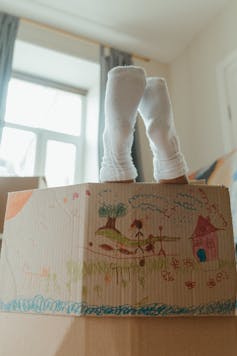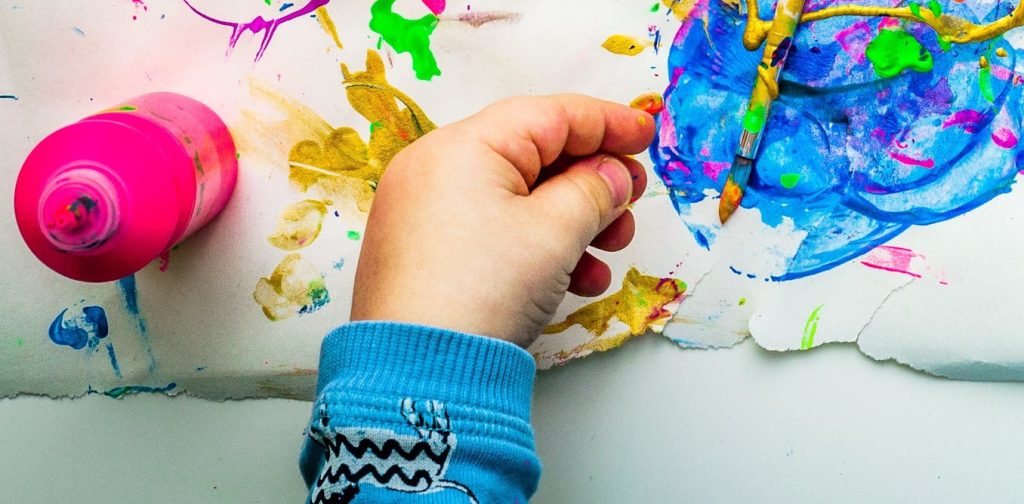The COVID-19 pandemic has affected children’s worlds in many ways. Due to closures and restrictions, they have experienced the loss of social engagement and the support of friends, school communities or extended family. Children have likely had conversations about the virus and what they can do to stay safer, and they may be exposed to news stories about COVID-19.
Children are impacted by the pervasive mood of their family around them. Change is inevitable throughout life, and children experience change differently depending on a number of developmental, biological and relational variables.
Childhood is often fraught with varying levels of adversity. Infant and child mental health is dependent on adults, typically loving caregivers, to scaffold understanding and experiences to facilitate reasonable emotional, social, cognitive and behavioural responses, such as resilience and empathy.
Hearing children’s experiences of the pandemic
Children express their thoughts and feelings through art and play. They engage in creative outlets to share their experiences, relieve stress and work through what occurs in their lives. Children lack the developmental ability and life experience to understand, verbally express and process difficult, adverse or traumatic experiences.
Art can be a way to promote and support mental health in children. It’s especially important right now to create a nurturing space for children to make art.
As adults envision the futures of today’s children, it’s important that we hear and capture children’s experiences of the pandemic. This is the focus of a study I am undertaking in the early childhood studies program at University of Guelph-Humber. Through the study of children’s art produced during this time, we will be listening to children’s voices and perspectives. We invite you to learn more and consider sharing your children’s art in the study.

(Piqsels)
Critical role of relationships
Children who are provided loving, secure, trusting environments typically develop safe, secure and loving relationships with others throughout their lifetimes.
They often provide people and situations the benefit of the doubt, offering understanding and forgiveness when required. They have learned that their world and the people in it are relatively safe and trustworthy. They bring this working model of the world into situations and interactions with others.

(Pexels/Cottonbro)
Children who encounter increased stress, anxiety, fear or lack of emotional attunement or understanding through experiences with their caregiver(s) often develop ideas of the world that are based in fear and the need to form protection. This is the case even while parents provide children with the best experiences and environment possible.
This is due, in part, to the inter-generational transmission of attachment behaviours. People generally parent as they have been parented. Early experiences are part of the genetic makeup of the child: social epigeneticists have stated these experiences “live under the skin.” Children are affected by early childhood experiences throughout their lives.
Creating art helps children express their feelings and thoughts. It provides them the opportunity to imagine possibilities, see and create alternative scenarios that can open new ways to engage in their relationships and environments and to demonstrate resiliency.
Tips for parents on supporting self-expression through art
-
Create a child-friendly space that can get messy and allow for unabashed creativity. Provide your child with tools such as paper, crayons, plasticine, paint, glitter and allow them to freely explore and create. Some kids will enjoy sitting at a table and others will enjoy the floor. How they choose to create doesn’t matter, if the space supports their comfort, size and creative style.
-
Stay close and follow your child’s lead. Doodle yourself and you might be surprised how much your child shares while creating. Older children and teens may like to work independently but remain available; they may want to share ideas.
-
The art they create may look like something identifiable or it may not. Don’t worry about what it looks like, or whether it looks like anything at all! Self-expression is valid for its own sake.
-
Try not to pressure your child to create, or to perform. Self-expression should feel good. Provide the tools and the space and let them express.
-
Provide positive feedback when they show you their work. Remember, this is the expression of their feelings and how they see themselves and the world. Don’t try to change or “improve” it. You might ask questions, beginning with something open-ended like: “This is beautiful, can you tell me about it?” You might wonder about a colour used, or share the feeling it creates in you. Encourage sharing and talking about it. Allow them to experience pride, vulnerability, trust and acceptance.
-
Be open. Art is a great way to express and share feelings and love with each other. Creating together can be a fun experience that builds trust and acceptance.
You might also find pediatrician and psychoanalyst Donald Winncott’s Squiggle Game fun, which has the side benefit of seeing each other’s unique perspectives, and likely prompting some chuckles.





